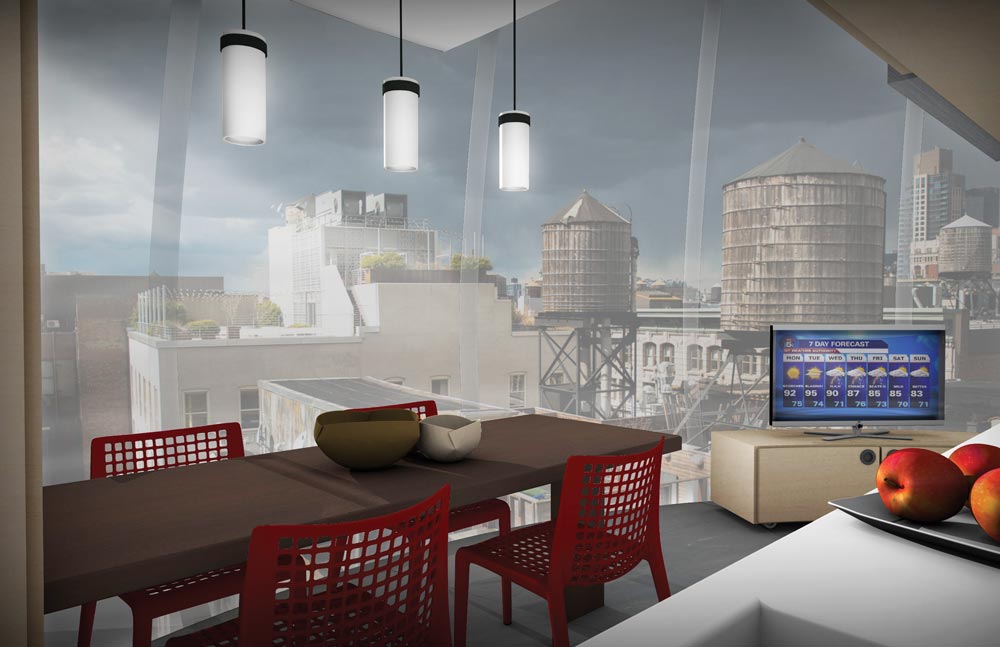Nesting
Inspired by bird dwellings, architecture alumnus envisions lofty homes
As a child, Michael Perry went birding with his mother every weekend. “I didn’t have a choice,” he says, “but it did give me a love of birds.” Those outings provided the inspiration for his recent award-winning architectural design.
Perry (Arch ’11), who is senior designer at Prophet Brand Strategy in New York City, often sees buildings of different heights situated next to each other as he walks around the city. The exposed wall of the taller building is rarely used, Perry says. “It’s used for billboard signs, if anything. So I thought, ‘Why not try to occupy that space with something more useful?’”
The empty walls made him think of cliff swallows’ gourd-shaped nests, built on the walls of vertical structures. His design envisions small, gourd-shaped apartments that would jut out from the exposed sides of tall buildings.

In May, Perry's entry took first place in the social impact category of the Future of Architecture Residential Design Contest and Showcase. The contest, open to students and professionals, was sponsored by the American Institute of Architects and Houzz, an online home-design platform. A website featured entries for more than a month, and popular vote determined the winners.

Perry’s design could be used to expand existing apartments, allowing families to make space for children or aging relatives, or they could be stand-alone dwellings that attach to the sides of nonresidential buildings. In either case, the attachment points would be minimally invasive, leaving few “scars” on the host structures if the units were removed.
“More and more people are moving to cities,” Perry says. “This design will help architects and community leaders think about how to make cities even denser without completely eliminating the character that currently exists.”

The design is a thought experiment for now. Taking it from the drawing board to reality would require several stages of development and would be a lengthy process—if it ever happened. Whatever becomes of the idea, though, Perry’s vision of melding a human dwelling with a design from nature has created a pleasing harmony in his own life.
“Nature can teach us a lot,” he says. “Trying to imitate nature isn’t the guiding force behind all that I do. But in this specific instance, I connected the dots between where I’ve been, where I am now and where I see housing going in the future. It all came together for this competition.”
